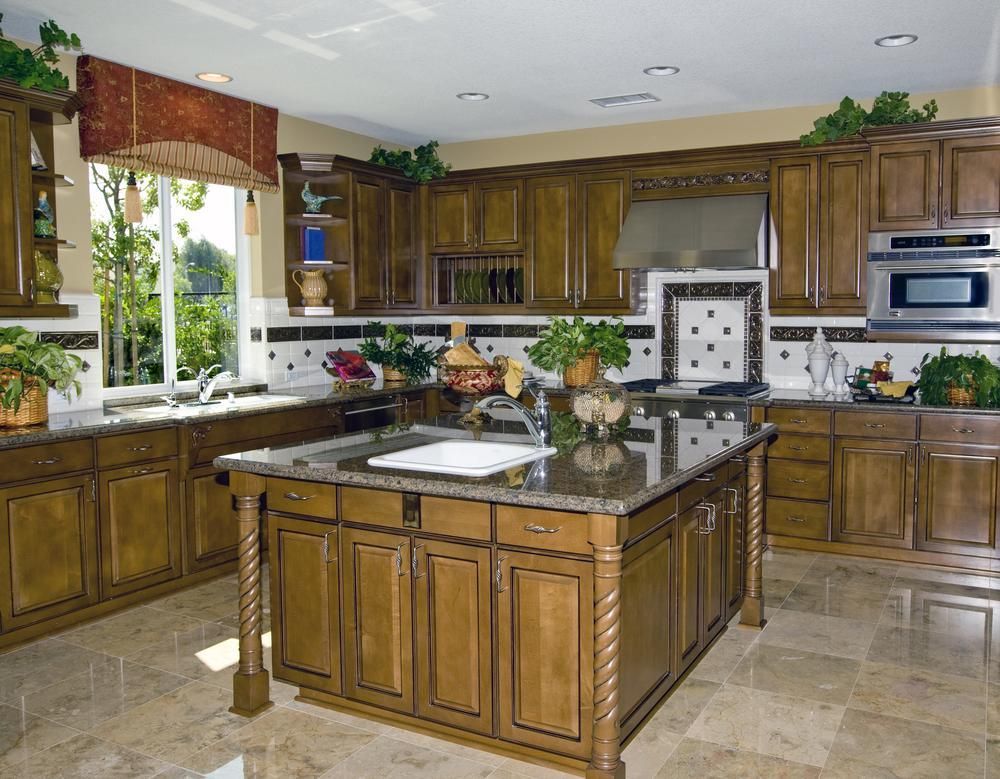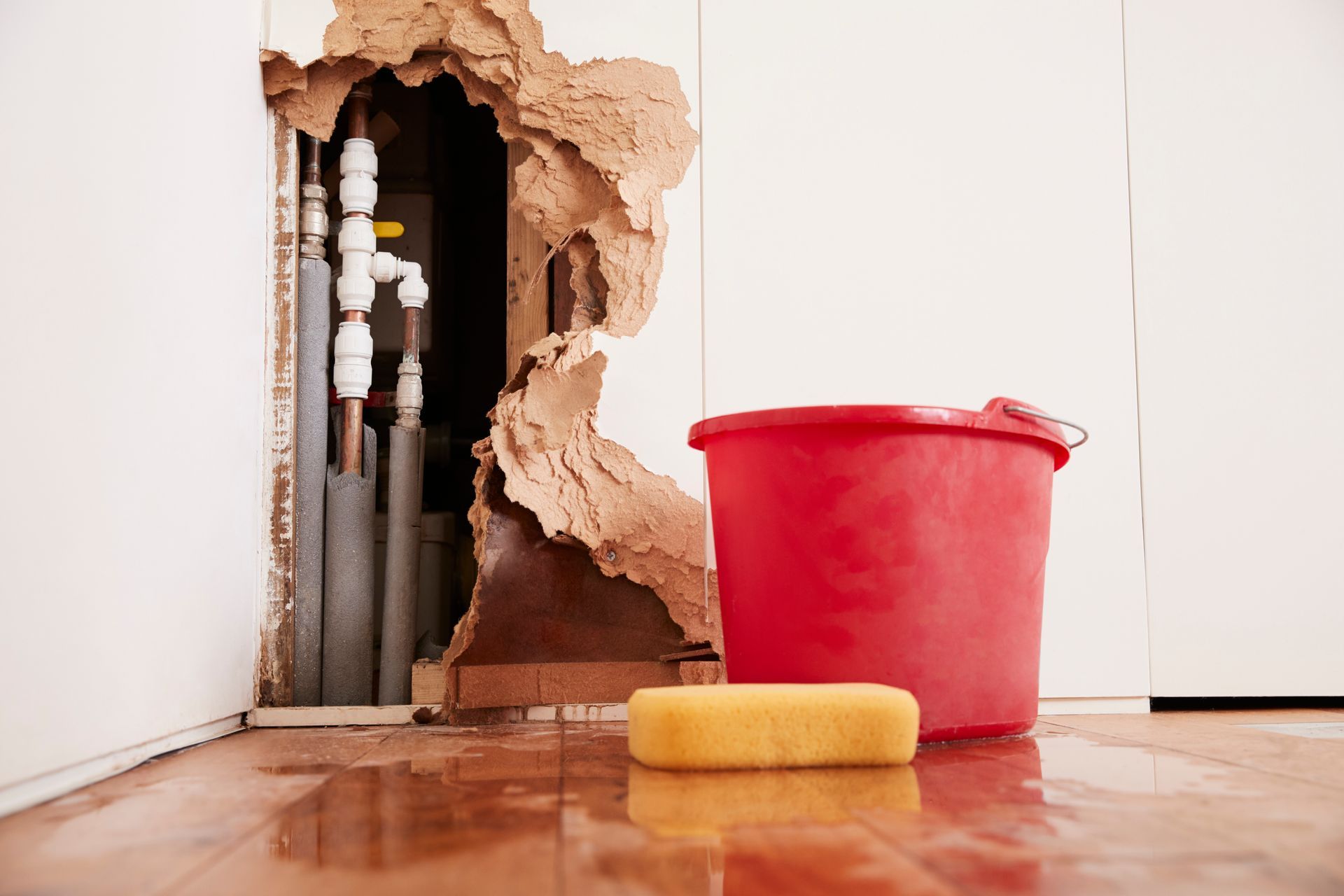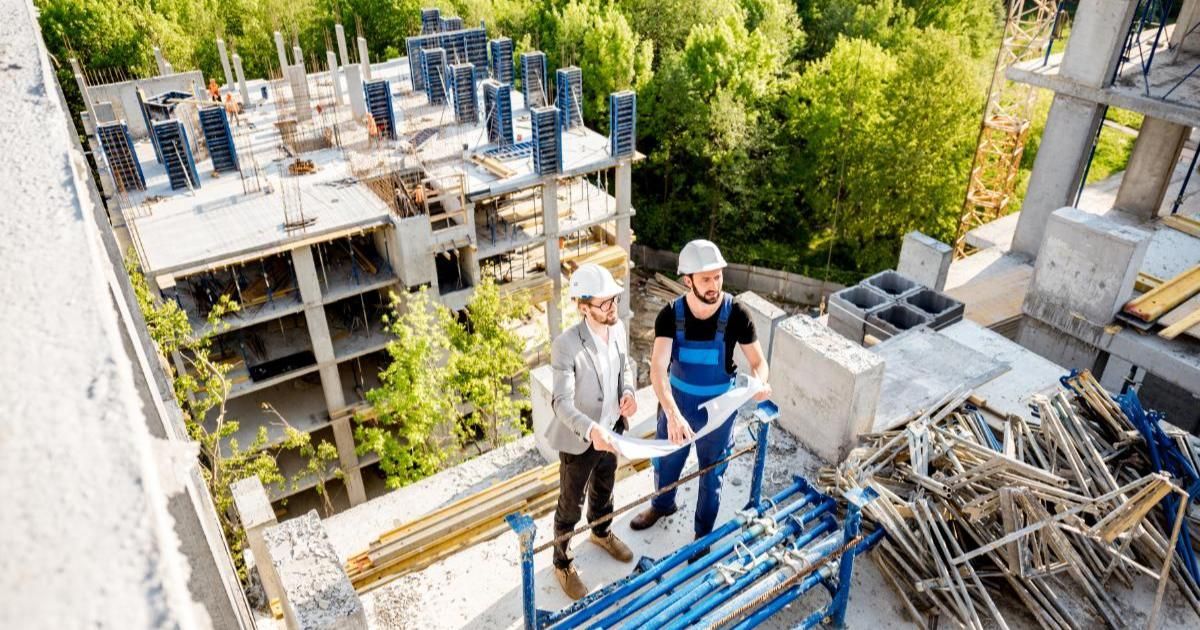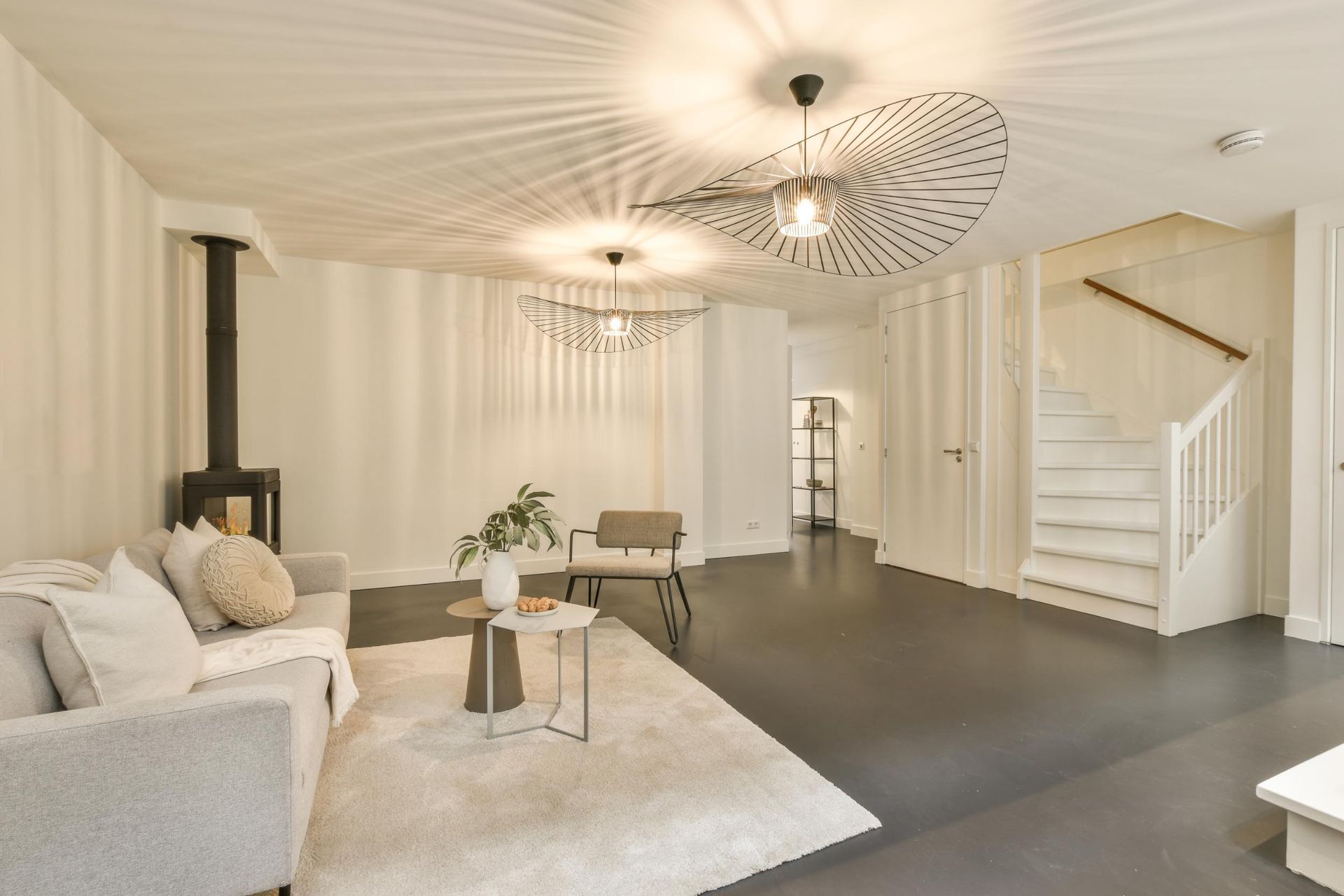When it comes to maintaining a comfortable and cozy home environment, having the right HVAC (heating, ventilation, and air conditioning) system is crucial. However, with numerous options available in the market, it can be overwhelming to choose the most suitable HVAC system for your specific needs. In this article, we will delve into the various types of HVAC systems, their features, benefits, and considerations, to help you make an informed decision.
Exploring HVAC Systems For Your Home
Centralized HVAC Systems
Centralized HVAC (Heating, Ventilation, and Air Conditioning) systems are at the forefront of climate control technology in modern buildings. These systems offer an efficient and effective solution for maintaining optimal indoor temperatures, air quality, and humidity levels. In this article, we will explore the key features, advantages, and considerations of centralized HVAC systems, highlighting their importance in creating comfortable and healthy indoor environments.
Understanding Centralized HVAC Systems : Centralized HVAC systems consist of a central unit that distributes conditioned air throughout a building via a network of ducts and vents. They are typically found in larger buildings such as office complexes, shopping malls, hospitals, and educational institutions. The system comprises various components, including chillers or boilers, air handling units, ductwork, and controls.
Energy Efficiency and Cost Savings : One of the primary benefits of centralized HVAC systems is their energy efficiency, leading to significant cost savings over time. These systems employ advanced technologies such as variable air volume (VAV) control, energy recovery, and zoned heating and cooling, allowing for precise temperature control in different zones or areas. By optimizing energy consumption, centralized HVAC systems reduce operational costs and contribute to a greener and more sustainable environment.
Enhanced Indoor Air Quality : Maintaining high indoor air quality (IAQ) is crucial for occupant comfort and health. Centralized HVAC systems incorporate air filtration, ventilation, and humidity control features to ensure a fresh and clean indoor environment. The use of filters and air purifiers helps remove pollutants, allergens, and contaminants, promoting a healthier atmosphere and reducing the risk of respiratory issues.
Improved Comfort and Temperature Control : Centralized HVAC systems provide consistent and even heating or cooling throughout a building, ensuring occupant comfort in every area. The use of programmable thermostats and zone control allows for customized temperature settings in different zones, accommodating varying occupancy levels and individual preferences. This flexibility enhances comfort and promotes productivity in workspaces while also reducing energy waste in unoccupied areas.
HVAC Maintenance and Monitoring : Proper maintenance is essential for the efficient operation and longevity of centralized HVAC systems. Regular inspections, filter replacements, and cleaning of ducts and vents are necessary to ensure optimal performance and prevent issues such as air flow restrictions or equipment malfunctions. Additionally, modern systems often include advanced monitoring and control features that enable remote diagnostics, real-time performance tracking, and predictive maintenance, simplifying upkeep and reducing downtime.
Considerations for Implementation : While centralized HVAC systems offer numerous benefits, several factors should be considered during implementation. Proper system design, including load calculations, ductwork layout, and equipment sizing, is crucial to ensure optimal performance and energy efficiency. Additionally, the installation cost and space requirements should be evaluated, especially in retrofit projects. Collaboration with experienced HVAC professionals can help overcome these challenges and ensure a successful implementation.
Ductless Mini-Split Systems
Ductless mini-split systems have gained popularity as efficient and versatile climate control solutions for both residential and commercial spaces. These systems offer flexibility in installation, energy efficiency, and individualized comfort control. In this article, we will delve into the key features, benefits, and considerations of ductless mini-split systems, highlighting their advantages in providing effective cooling and heating solutions.
Understanding Ductless Mini-Split Systems : Ductless mini-split systems consist of two main components: an outdoor unit and one or more indoor units. Unlike centralized HVAC systems, they do not require ductwork to distribute conditioned air. Instead, refrigerant lines connect the outdoor and indoor units, allowing for efficient cooling and heating in individual zones or rooms. Each indoor unit can be independently controlled, providing customized comfort based on occupants’ preferences and specific needs.
Easy Installation and Space Efficiency : One of the significant advantages of ductless mini-split systems is their simple installation process. With no need for extensive ductwork, these systems can be installed in both new constructions and retrofit projects with minimal disruption. The indoor units are mounted on walls or ceilings, requiring only a small hole for the refrigerant lines to pass through. This makes them an ideal option for spaces where ductwork installation is impractical or space is limited.
Energy Efficiency and Cost Savings : Ductless mini-split systems offer notable energy efficiency advantages. The absence of ductwork eliminates energy losses associated with air leakage in traditional systems. Additionally, each indoor unit can be controlled independently, allowing for precise temperature adjustments in individual zones. This zoning capability ensures that energy is directed only where needed, resulting in significant energy savings and reduced utility costs.
Enhanced Comfort Control : Ductless mini-split systems provide personalized comfort control in each zone or room. Occupants can adjust the temperature settings according to their preferences, eliminating conflicts arising from varying comfort needs. These systems also offer additional features such as programmable timers and sleep modes, enabling further customization and energy optimization. The ability to cool or heat specific areas independently allows for increased comfort and flexibility in multi-use spaces.
Quiet Operation and Improved Indoor Air Quality : Ductless mini-split systems are known for their quiet operation, ensuring a peaceful and comfortable indoor environment. The indoor units are designed with noise-reducing features, providing unobtrusive cooling and heating without disturbing activities or conversations. Moreover, these systems incorporate filters that capture dust, allergens, and other particles, improving indoor air quality and creating a healthier living or working environment.
Considerations for Implementation : Before installing a ductless mini-split system, several factors should be considered. Proper sizing of the system based on the cooling and heating load of each zone is essential to ensure optimal performance and energy efficiency. Placement of the indoor units should be strategically determined to provide even air distribution and coverage. Additionally, professional installation and regular maintenance are crucial to ensure the system operates efficiently and to maximize its lifespan.
Heat Pump Systems
Heat pump systems have revolutionized the way we heat and cool our buildings, offering efficient and versatile solutions for year-round comfort. These systems utilize advanced technology to extract heat from the air, ground, or water, providing both heating and cooling capabilities. In this article, we will explore the key features, benefits, and considerations of heat pump systems, highlighting their importance in achieving energy-efficient and sustainable climate control.
Understanding Heat Pump Systems : Heat pump systems operate on the principle of transferring heat from one location to another. They consist of an outdoor unit and an indoor unit connected by refrigerant lines. During the summer, heat pumps extract heat from indoor spaces and release it outdoors, providing cooling. In colder months, the process is reversed, extracting heat from the outdoor environment and transferring it inside for efficient heating.
Energy Efficiency and Cost Savings : Heat pump systems are known for their exceptional energy efficiency. Rather than generating heat through combustion or electrical resistance, they utilize the natural heat present in the air, ground, or water sources. This results in significantly lower energy consumption and reduced utility bills. Compared to traditional heating and cooling systems, heat pumps can deliver up to four times the amount of energy they consume, making them an environmentally friendly and cost-effective choice.
Versatile Heating and Cooling : One of the major advantages of heat pump systems is their versatility. They can provide both heating and cooling functions, eliminating the need for separate systems. This versatility makes them ideal for regions with moderate climates where temperature fluctuations occur throughout the year. Heat pump systems offer consistent and efficient comfort, ensuring optimal indoor conditions regardless of the season.
Environmental Sustainability : Heat pump systems are recognized for their environmental benefits. By utilizing renewable heat sources such as the air, ground, or water, they reduce reliance on fossil fuels and minimize greenhouse gas emissions. Heat pumps have a lower carbon footprint compared to traditional heating systems, contributing to a more sustainable and eco-friendly future. Investing in heat pump technology aligns with global efforts to combat climate change and reduce environmental impact.
Quiet Operation and Enhanced Comfort : Heat pump systems operate quietly, providing a peaceful indoor environment. The indoor units are designed with noise-dampening features, ensuring minimal disruption to daily activities or sleep. Additionally, heat pumps offer precise temperature control, allowing occupants to maintain their desired comfort levels. Many systems also incorporate features such as adjustable fan speeds and programmable timers for further customization and energy optimization.
Considerations for Implementation : When considering the installation of a heat pump system, a few factors should be taken into account. Proper system sizing is crucial to ensure optimal performance and efficiency. The availability of suitable heat sources (air, ground, or water) should be assessed, and the system should be designed accordingly. Professional installation by experienced technicians is essential to ensure proper integration and performance. Regular maintenance and filter replacements are necessary to keep the system operating efficiently and prolong its lifespan.
Radiant Heating Systems
Radiant heating systems have gained recognition as a highly efficient and comfortable method of heating buildings. Unlike traditional forced-air systems that rely on air circulation, radiant heating systems directly transfer heat to objects and surfaces in a space, providing consistent and even warmth. In this article, we will explore the key features, benefits, and considerations of radiant heating systems, highlighting their importance in creating a cozy and energy-efficient indoor environment.
Understanding Radiant Heating Systems : Radiant heating systems use a network of tubes or electric heating elements installed in floors, walls, or ceilings to distribute heat. These systems can utilize different heat sources, such as hot water, steam, or electric resistance. As the heat radiates from the surfaces, it warms up objects and people in the room, creating a comfortable and gentle heating effect.
Energy Efficiency and Cost Savings : Radiant heating systems are known for their energy efficiency and cost savings. They operate at lower water temperatures compared to traditional forced-air systems, reducing energy consumption. The direct transfer of heat to objects and people eliminates heat loss through ductwork and minimizes temperature stratification, resulting in more efficient heating. Additionally, zoning capabilities allow for heating specific areas as needed, avoiding wasted energy in unoccupied spaces.
Comfort and Indoor Air Quality : Radiant heating systems offer exceptional comfort due to their ability to create even heat distribution throughout a space. The absence of forced air eliminates drafts, hot or cold spots, and airborne allergens commonly associated with forced-air systems. The radiant heat warms objects and surfaces, providing a cozy environment similar to basking in natural sunlight. Furthermore, since radiant heating systems do not involve air circulation, they do not contribute to the redistribution of dust and allergens, improving indoor air quality.
Design Flexibility and Aesthetics : Radiant heating systems provide design flexibility and aesthetic benefits. The heating elements are installed beneath the floor, within walls, or in ceilings, allowing for a clean and unobtrusive heating solution. This design feature eliminates the need for bulky radiators or visible heating equipment, freeing up floor space and enhancing interior aesthetics. Radiant heating systems can be easily incorporated into various building designs and architectural styles.
Quiet and Maintenance-Free Operation : Radiant heating systems operate quietly, without the noise associated with forced-air systems. There are no fans or blowers required for air circulation, resulting in a peaceful indoor environment. Additionally, radiant heating systems have fewer mechanical components, reducing the likelihood of system malfunctions. With minimal moving parts, these systems generally require less maintenance, providing a hassle-free heating solution for occupants.
Considerations for Implementation : Proper design and installation are crucial for the successful implementation of radiant heating systems. Factors such as heat source selection, insulation, and floor covering compatibility should be carefully considered. It is recommended to work with experienced professionals who can assess the specific requirements of the space and ensure efficient and reliable system installation. Regular maintenance, including inspections and checks for leaks or damage, helps maintain the system’s performance and longevity.
Hybrid HVAC Systems
Hybrid HVAC (Heating, Ventilation, and Air Conditioning) systems have emerged as a solution that combines the strengths of multiple heating and cooling technologies to provide efficient and versatile climate control. By integrating different energy sources and components, hybrid systems offer enhanced energy efficiency, reduced environmental impact, and improved comfort. In this article, we will explore the key features, benefits, and considerations of hybrid HVAC systems, highlighting their importance in achieving optimal climate control in residential and commercial settings.
Understanding Hybrid HVAC Systems : Hybrid HVAC systems integrate two or more heating and cooling technologies to optimize energy consumption and efficiency. Common combinations include the use of a heat pump alongside a traditional furnace or boiler, or the integration of solar thermal collectors with a conventional HVAC system. These systems utilize the most appropriate technology based on factors such as outdoor temperatures, energy costs, and individual comfort requirements.
Enhanced Energy Efficiency : One of the primary benefits of hybrid HVAC systems is their enhanced energy efficiency. By utilizing multiple energy sources and components, these systems can adapt to varying weather conditions and energy costs. During milder seasons, a heat pump can efficiently provide heating and cooling, utilizing the ambient air, ground, or water as a heat source. In colder climates or during peak demand periods, the hybrid system can switch to a traditional furnace or boiler for additional heating capacity, optimizing energy usage and reducing utility costs.
Environmental Sustainability : Hybrid HVAC systems contribute to environmental sustainability by reducing reliance on fossil fuels and minimizing greenhouse gas emissions. The integration of renewable energy sources, such as solar thermal collectors, allows for the utilization of clean and renewable energy for heating and hot water needs. By strategically selecting the most efficient and sustainable energy sources, hybrid systems can help mitigate the environmental impact associated with traditional HVAC systems.
Versatility and Flexibility : Hybrid HVAC systems offer versatility and flexibility in meeting diverse heating and cooling requirements. They can adapt to changing weather conditions and energy availability, ensuring optimal comfort levels throughout the year. Hybrid systems allow for customized control and automation, enabling seamless transitions between energy sources based on pre-defined settings or real-time conditions. This adaptability ensures a comfortable indoor environment while maximizing energy efficiency.
Comfort and Indoor Air Quality : Hybrid HVAC systems prioritize occupant comfort and indoor air quality. By incorporating advanced air filtration and ventilation technologies, these systems can effectively remove pollutants, allergens, and odors from the indoor air. The ability to maintain consistent and precise temperature control ensures optimal comfort throughout the space. The integration of humidity control features further enhances indoor air quality and occupant well-being.
Considerations for Implementation : Implementing a hybrid HVAC system requires careful planning and consideration. Factors such as the building’s energy demands, climate conditions, available energy sources, and space limitations should be assessed. System design, including proper sizing, equipment selection, and integration, should be carried out by experienced HVAC professionals to ensure optimal performance and compatibility. Regular maintenance and monitoring are necessary to ensure the system operates efficiently and to address any issues promptly.
Ductwork Design and Considerations
Ductwork design plays a crucial role in the efficiency and performance of HVAC (Heating, Ventilation, and Air Conditioning) systems. Properly designed and installed ductwork ensures effective air distribution, balanced airflow, and optimal energy efficiency. In this article, we will explore the key aspects, benefits, and considerations of ductwork design, highlighting its importance in achieving efficient HVAC operation and maintaining indoor comfort.
Understanding Ductwork Design : Ductwork refers to the network of conduits that distribute conditioned air throughout a building. It consists of various components, including supply ducts that deliver air to different zones and return ducts that collect and return air back to the HVAC system. Ductwork design involves considerations such as sizing, layout, insulation, and sealing to ensure efficient airflow and minimal energy loss.
Airflow Efficiency and Balanced Distribution : Proper ductwork design ensures efficient airflow and balanced distribution of conditioned air. The sizing of ducts should be carefully calculated to minimize resistance and pressure drops. An inadequate or oversized duct system can result in airflow restrictions, uneven temperature distribution, and reduced system efficiency. By optimizing the duct sizing and layout, designers can achieve even airflow, consistent comfort, and energy efficiency throughout the building.
Energy Efficiency and Air Leakage Prevention : Efficient ductwork design minimizes energy loss through air leakage. Sealing joints, connections, and ductwork properly helps prevent conditioned air from escaping into unconditioned spaces, such as attics or crawl spaces. Air leakage can significantly impact system performance, leading to energy waste and reduced indoor comfort. Proper insulation and sealing techniques, such as using duct sealants and insulating exposed ductwork, contribute to enhanced energy efficiency and reduced utility costs.
Noise Reduction and Acoustic Considerations : Ductwork design should also address noise reduction and acoustic considerations. Properly sized ducts and smooth airflow paths help minimize turbulence and associated noise. Incorporating noise-dampening materials, such as insulation or acoustic lining, can further reduce sound transmission within the ducts. By considering acoustic factors during ductwork design, a quieter and more comfortable indoor environment can be achieved.
Maintenance Accessibility and Air Quality : Ductwork design should prioritize easy access for maintenance and cleaning. Properly designed access panels and service points facilitate regular inspections, filter replacements, and cleaning of ducts. Ensuring easy maintenance access helps maintain optimal system performance, airflow, and indoor air quality. Clean and well-maintained ductwork minimizes the accumulation of dust, allergens, and contaminants, contributing to a healthier indoor environment.
Considerations for Design and Installation : When designing and installing ductwork, several factors should be considered. These include the size and layout of the building, the HVAC system capacity, the number of zones or areas to be conditioned, and the desired air distribution. Collaboration between HVAC designers and ductwork specialists is essential to ensure a well-integrated system that meets the specific requirements of the building. Compliance with local building codes and regulations is crucial to ensure safety and efficiency.
Selecting the right HVAC system for your home is a significant decision that requires careful consideration. Each type of HVAC system comes with its own set of features, benefits, and considerations. Whether you opt for a centralized system, ductless mini-split, heat pump, radiant heating, or hybrid system, consulting with an HVAC professional can help you determine the best fit for your specific requirements. Remember, a well-designed and properly maintained HVAC system will ensure your home remains comfortable, energy-efficient, and welcoming all year round.
Share this Post








